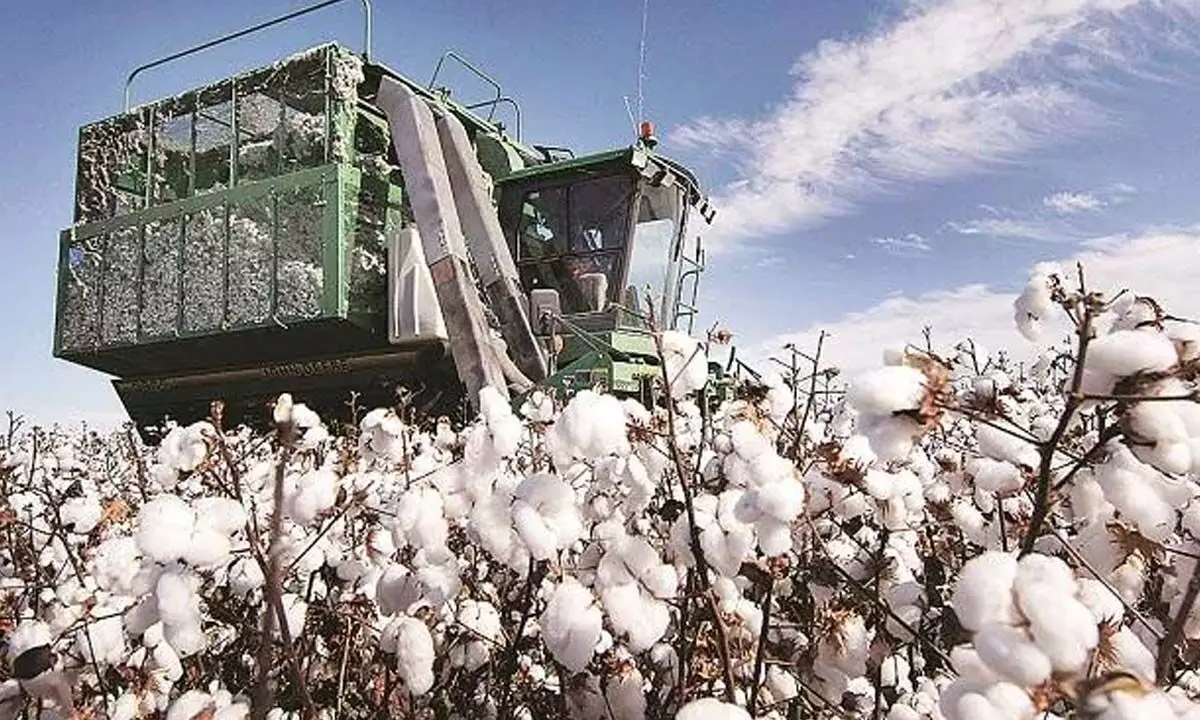Temporary ban on exports of cotton, cotton yarn is need of the hour
High cotton price and anticipation of low production of the cotton; record-breaking inflation are clear indicators that things are not going to be easy in near future for garment manufacturers
image for illustrative purpose

Just a few days back, India's official body of garment exporters, the Apparel Export Promotion Council (AEPC) has clearly said that if India doesn't have the control over the constantly increasing cotton and cotton yarn prices, it may affect the annual target of garment export worth $19-20 billion during the current financial year
I am a firm believer in positivity and one has to be but it doesn't mean that we should overlook the challenges especially, in the current conditions when things are recovering from the two most difficult years of Covid-19.
High cotton price and anticipation of low production of the cotton; record-breaking inflation in overseas as well as in India are the clear indicators that things are not going to be easy at all in near future for export as well as domestic fronts. Especially for MSMEs as those don't have deep pockets and liquidity to survive long.
Just a few days back, India's official body of garment exporters, the Apparel Export Promotion Council (AEPC) has clearly said that if India doesn't have the control over the constantly increasing cotton and cotton yarn prices, it may affect the annual target of garment export worth $19-20 billion during the current financial year.
And it is very much true as difficulties are also increasing with leading countries like the UK. The UK economy faces an increased risk of falling into a recession as firms and households buckle under the fastest inflation rate in the last 40 years.
Not only the UK, but the entire world is also inching toward a challenging phase as the International Monetary Fund (IMF) has said the economy faces 'perhaps its biggest test since the Second World War.'
A new report from the Organisation for Economic Co-operation and Development (OECD), shows that the combined GDP of the G7 countries shrank by 0.1 per cent in the first quarter of the year, compared with the previous three-month period.
About India, no doubt, the union government has realised the condition before it becomes too late and reduced the price of fuel, ban the wheat export and there are a few more steps in the pipeline. RBI will also increase the repo rate again soon.
I don't think there is anything left to do for the industry stakeholders about high raw material prices. Representation at the various levels, meeting with ministers, strikes, use of various blends in the garments, increase the MRP as well as FOB price of garments…what else garment manufacturers or the segments, those are suffering from cotton's high price, can do more. So far there is no impact of the removal of import duty on cotton. As time and again, various industry representatives have said, it's the only government which can take some concrete and visible action.
And anyhow if we have the raw material price under control in future that will be a major support for the industry but global inflation is something that can be another major problem and have a negative impact.
I strongly feel that the industry is as usual helpless as it often used to. There is a limit to automation, cost control and all other kinds of improvement, which can be done to become cost-effective. There is nothing at the industry level to overcome the impact of inflation.
Though the challenges are at the global level, India has more impact, be it job loss, closure of the business (as the larger segment is of MSMEs) in fact at some front, the situation can be worst in the coming days as so far there is no indication that anything is going to happen to control raw material price.
The textile business is surviving in bits and pieces, even before Covid we were not having very enthusiastic business and now things were good for almost a year. To achieve the ambitious target and have long term sustainable growth, continuous business is the first condition.
Ban on exports of cotton and cotton yarn, at least for some time is unavoidable and the government has many more ways to support farmers. One has to see that more export is in the interest of the country and that is only possible to focus more on the export of the final product. As per industry estimates, the outbound shipment of raw cotton fetches about Rs 275 per kg, but when it is converted to yarn, its price is Rs 400 per kg. But if a value-added final product garment is exported of the same, it could fetch between Rs 900 to Rs 1,100.
So, I must say that whatever the global conditions are, we should have no issue at our level and as government has done its best on trade deals with the UAE, Australia; policy support etc. With collective efforts, there should no major issue that hamper the Indian textile and garment industry growth. Let's hope that our nation has long term growth and our industry creates more jobs, and contributes more revenue.
(The author owns a garment manufacturing setup in a rural area, which employs mostly women workers)

